Begrijpt U Nu Waarom Ik Huil? is a film of genre Documentary directed by Louis van Gasteren
Begrijpt U Nu Waarom Ik Huil? (1968)

If you like this film, let us know!
Begrijpt U Nu Waarom Ik Huil? (Now Do You Get It Why I'm Crying?) is a 1969 documentary film by Dutch director Louis van Gasteren.
In the late 1960s Van Gasteren was drawn to the work of the Leiden University professor Jan Bastiaans (nl) treating traumatized war survivors. Gasteren was concerned about the psychotherapeutic treatment with LSD on a former concentration camp prisoner in Bastiaans' clinic. The patient focused on was named Joop. Joop was arrested by the Nazis in September 1941 and underwent a long journey through hell among different camps until he was liberated by the Russians in 1945. Joop returned home to his wife a different man. He had nightmares and was incapable of ordinary human contact. With two cameras Gasteren shot about six and a half hours of the first treatment Joop underwent at Bastiaans. Particular attention is paid to details: Joop's hands, the sweat on his forehead, a tear running down his cheek slowly. From this Gasteren edited more than one hour of film that made a big impression at release and even led to questions in Parliament. 16 mm, b/w, 62 minutes.
In 2003 Van Gasteren directed a sequel, The Price of Survival, about Joop's surviving family and their own continued suffering after his death in 2000. 62 min, 35mm.
Comments
Leave comment :
Suggestions of similar film to Begrijpt U Nu Waarom Ik Huil?
There are 4 films with the same director, 8968 with the same cinematographic genres, 13237 films with the same themes (including 2 films with the same 9 themes than Begrijpt U Nu Waarom Ik Huil?), to have finally 70 suggestions of similar films.If you liked Begrijpt U Nu Waarom Ik Huil?, you will probably like those similar films :

Beyond Words (1997)
, 28minutesDirected by Louis van Gasteren
Genres Documentary
Themes Documentaire sur une personnalité
The film begins in 1967 with extremely exotic and unusual scenes of a mast (a kind of Sufi God-intoxicated person that Baba worked with), followed by a scene of Baba washing the feet of lepers. Next the filmmaker greets Baba with a bougainvillea branch and proceeds to interview him on God-realization, drugs, and cinema. The film ends with a much older Van Gasteren returning to India three decades later in a reunion with Eruch Jessawala who originally interpreted Baba's gestures. Meher Baba has long died as the now more mature men exchange words and photos. Also in the final scenes, Louis van Gasteren dons a red turban that Meher Baba had given him during their meeting in 1967 and which he had not worn for 30 years. The turban was later donated to the Meher Spiritual Center in Myrtle Beach.

Hans, Life Before Death (1983)
, 2h35Directed by Louis van Gasteren
Genres Documentary
Themes Documentaire sur une personnalité
Rating68%





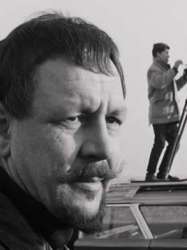
Nema Aviona Za Zagreb (2012)
, 1h22Directed by Louis van Gasteren
Origin France
Themes Films about films, Medical-themed films, Films about drugs, Documentary films about business, Documentary films about the visual arts, Documentary films about the film industry, Documentary films about law, Documentaire sur une personnalité, Documentary films about health care, Autobiographical documentary films
Actors Louis van Gasteren, Michèle Girardon, Nicholas Parsons
As the film opens, a ninety-year-old Louis van Gasteren—a documentary filmmaker and artist famed in the Netherlands—is seated in a video editing suite, watching scenes of himself in the 1960s, a time when “anything was possible.” He reflects on how much he has changed, and that he is that same person and yet is not.
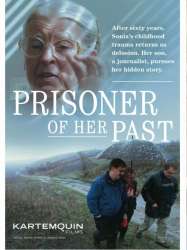
Prisoner of Her Past (2010)
, 57minutesOrigin USA
Genres Documentary
Themes Medical-themed films, Films about racism, Films about religion, Documentary films about racism, Documentary films about law, Documentary films about war, Documentary films about historical events, Documentaire sur une personnalité, Documentary films about religion, Documentary films about health care, Films about psychiatry, Films about disabilities, Political films, Films about Jews and Judaism, Documentary films about World War II
Rating74%





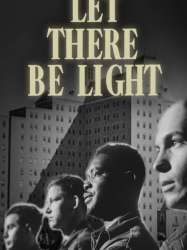
Let There Be Light (1946)
, 58minutesDirected by John Huston
Origin USA
Genres War, Documentary
Themes Medical-themed films, Documentary films about war, Documentary films about historical events, Documentaire sur une personnalité, Documentary films about health care, Films about psychiatry, Films about disabilities, Political films, Documentary films about World War II
Actors Walter Huston
Rating73%





Bouleversant témoignage sur les horreurs de la guerre censuré jusqu’en 1980, Que la lumière soit est aujourd’hui considéré comme l’un des meilleurs films jamais réalisés sur les conséquences psychologiques de la guerre.

Hell and Back Again (2011)
, 1h28Origin USA
Genres War, Documentary, Action, Historical
Themes Medical-themed films, Films about terrorism, Documentary films about war, Documentary films about historical events, Documentaire sur une personnalité, Documentary films about health care, Films about psychiatry, Films about disabilities, Political films, United States Armed Forces in films
Rating63%





Danfung Dennis filme le quotidien d'un régiment de l'armée américaine en Afghanistan, et plus particulièrement celui du Marine Harris jusqu'à son retour, blessé physiquement et mentalement, en Caroline du Nord.
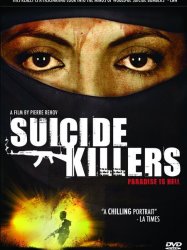
Suicide Killers (2006)
, 1h20Directed by Pierre Rehov
Origin USA
Genres Documentary
Themes Medical-themed films, Films about suicide, Films about terrorism, Documentary films about law, Documentary films about war, Documentary films about historical events, Documentaire sur une personnalité, Documentary films about politics, Documentary films about health care, Documentary films about terrorism, Films about psychiatry, Films about disabilities, Political films
Rating63%





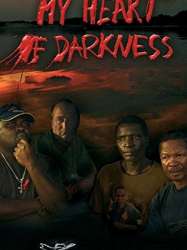
My Heart of Darkness (2010)
, 1h33Genres War, Documentary
Themes Films set in Africa, Medical-themed films, Documentary films about war, Documentary films about historical events, Documentaire sur une personnalité, Documentary films about health care, Films about psychiatry, Films about disabilities, Political films
Rating63%





 , 1h24
, 1h24Origin Israel
Genres War, Documentary
Themes Films set in Africa, Medical-themed films, Films about drugs, Documentary films about law, Documentary films about war, Documentary films about historical events, Documentaire sur une personnalité, Documentary films about health care, Films about psychiatry, Films about disabilities, Political films
Rating73%





 Connection
Connection